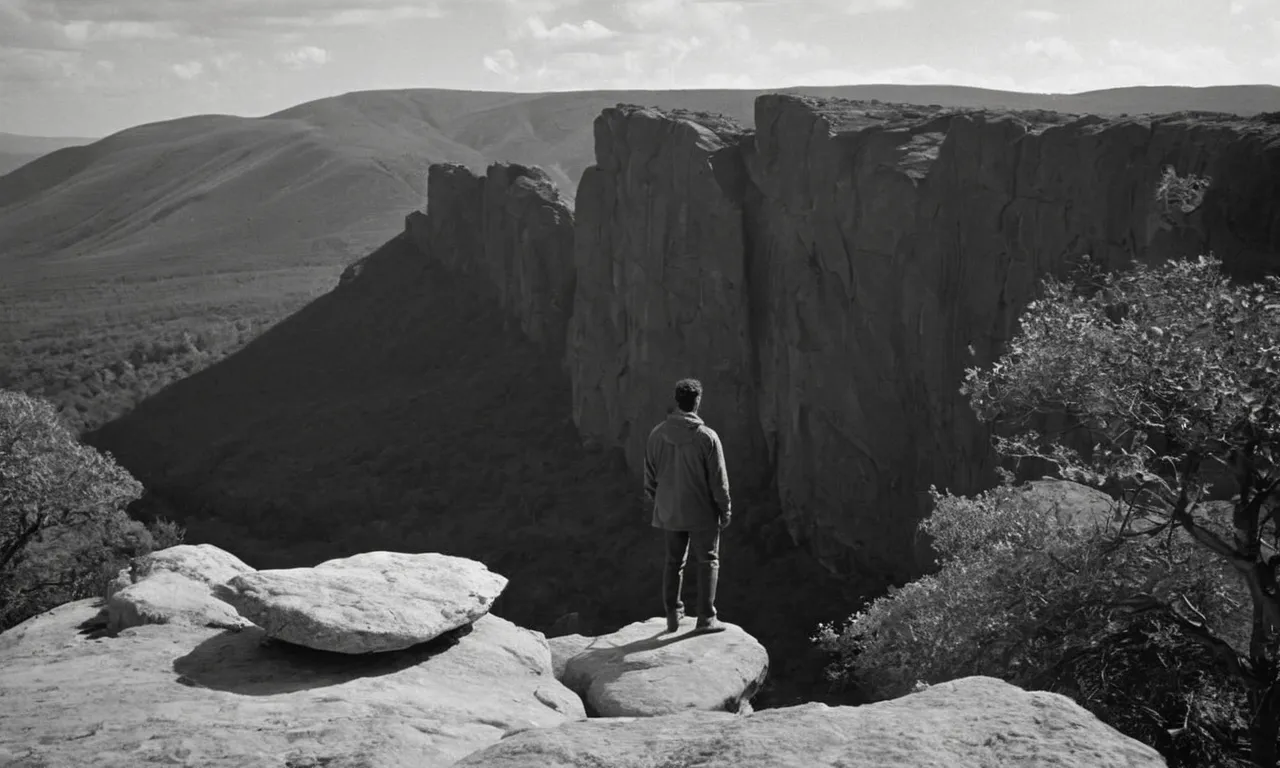Who Was The First Human On Earth According To The Bible?
Since the beginning of human history, one of the most fundamental questions we have asked is: where did we come from? If you’re short on time, here’s a quick answer: according to the Bible, the first humans on earth were Adam and Eve, created by God on the sixth day.
In this comprehensive article, we will examine what the Bible says about the origins of humanity and do a deep dive into the biblical texts about the first humans God created. We will analyze the Genesis creation story, look at the original Hebrew words used, and explore what Jewish and Christian thinkers have said about Adam and Eve over the centuries.
The Creation of Humanity in Genesis 1-2
Overview of the Genesis Creation Accounts
The book of Genesis contains two separate accounts of God creating humanity. Genesis 1:26-31 describes how God made humans, both male and female, on the sixth day after creating the rest of the world. Genesis 2:4b-25 focuses on the creation of the first man (Adam) and the first woman (Eve) in the Garden of Eden.
There are some differences between these accounts, but both show that God specially formed humans and gave them authority over the earth.
Analysis of Key Hebrew Words and Phrases
In Genesis 1, the Hebrew word for God’s creation of humanity is “bara” which means to create out of nothing. The passage says humans were made in God’s “image” and “likeness” (Heb. “tselem” and “demuth”), suggesting they were made to resemble God and represent Him on earth.
The command to have “dominion” over creation implies authority and responsibility. In Genesis 2, “Adam” comes from “adamah” meaning “ground,” indicating the man was formed from dust. God “breathed” life into Adam, imparting His own divine breath or spirit.
Examining Different Interpretations
There are several views about the relationship between Genesis 1 and 2. Some believe they are two separate creation stories penned by different authors. Others say Genesis 2 simply expands on the creation of humanity already mentioned in chapter 1.
A common view is that Genesis 1 describes the general creation of humans, while Genesis 2 focuses specifically on Adam and Eve and humanity’s special relationship with God. Ultimately, these accounts work together to depict humans as the pinnacle of God’s creation, made in His image to serve as vice-regents over the earth.
Who Were Adam and Eve According to the Bible?
According to the book of Genesis in the Bible, Adam and Eve were the first two human beings created by God on the sixth day of creation. They are central figures in the theological basis for the Judeo-Christian religions.
Their story explains the origins of humankind and the concepts of original sin and fall of man.
Adam as the First Man
Adam was the first man created by God in His image. Genesis 2:7 states “Then the Lord God formed a man from the dust of the ground and breathed into his nostrils the breath of life, and the man became a living being.” God placed Adam in the Garden of Eden to work and care for it.
Genesis 2:18-22 describes how God decided to create Eve as a companion for Adam after observing that he was lonely.
As the first man, Adam is seen as the forefather of the human race and an important patriarch. All humans are considered descendants of Adam. The Apostle Paul in the New Testament of the Bible refers to Jesus as “the last Adam” (1 Corinthians 15:45), contrasting him with the disobedience of the first man Adam.
Eve as the First Woman
According to Genesis 2:21-22, God created Eve from one of Adam’s ribs to be his companion and helper. Her name Eve means “life” or “living”, as she was the first woman and “mother of all the living”. Eve is credited as being the first woman on Earth according to Judeo-Christian belief.
She was created after Adam as a suitable partner for him.
However, Eve eats the forbidden fruit from the tree of knowledge of good and evil after being tempted by the serpent (Genesis 3:1-7). She then convinces Adam to eat it as well, leading to the fall from God’s grace and their expulsion from the Garden of Eden.
This marked the transition from a state of innocent obedience to God into a state of sin and disobedience.
Nonetheless, Genesis 3:20 states that Eve is “the mother of all the living”. All subsequent women were considered her daughters and inheritors of her role as life-giver.
Made in God’s Image
A key concept is that Adam and Eve were created in the image and likeness of God (Genesis 1:26-27), which is a foundational doctrine in Abrahamic religions. This endowed them with reason, morality, and a spiritual nature.
However, it also gave them free will, which allowed them to rebel against God’s commands.
Some key implications of being made in God’s image include having immortal souls, the ability to build relationships, stewardship over creation, and being made for relationship with God. This is used to argue for the dignity and sacredness of human life.
Therefore, Adam and Eve occupy a central role as the original creations of God who were made to reflect His glory.
The Garden of Eden and the Fall
The Location of the Garden of Eden
The book of Genesis describes the Garden of Eden as being located in the East, with a river flowing from it that separated into four headwaters – the Pishon, Gihon, Tigris and Euphrates rivers (Genesis 2:10-14).
The exact location is not given, but the Tigris and Euphrates rivers flow through modern day Iraq, suggesting it was located somewhere in the Middle East. Some scholars believe it may have been located near the northern end of the Persian Gulf, while others theorize it was near the eastern end of the Mediterranean Sea.
However, its precise geographic location remains a mystery.
The Tree of Life and the Tree of Knowledge
Genesis mentions two important trees that were contained within the Garden of Eden – the tree of life and the tree of the knowledge of good and evil (Genesis 2:9). The tree of life allowed Adam and Eve to live forever as long as they ate from it.
The tree of the knowledge of good and evil, however, was forbidden to eat from. Eating its fruit would give Adam and Eve wisdom and ability to discern between moral right and wrong, traits that God did not intend for mankind to have at that time.
Thus, while the tree of life represented immortality, the tree of knowledge represented morality and self-awareness – off-limits to the first humans.
The Serpent and the First Sin
Genesis 3 describes how a crafty serpent tempted Eve to eat the forbidden fruit from the tree of knowledge. The serpent convinced her that doing so would make her wise like God, and that God was keeping this trait from her unfairly (Genesis 3:1-5). Sadly, Eve believed the lies of the serpent.
She ate the fruit, gave some to Adam who was with her, and they both had their eyes opened to good and evil. This first sin, known as “the fall”, had grave consequences. They lost their innocence and became aware of their nakedness, feeling ashamed.
God punished them by cursing the ground and expelling them from the idyllic Garden of Eden, no longer having access to the tree of life (Genesis 3:6-24). Paradise was lost. This tragic event marked the downfall of mankind and explains how sin, suffering, and death entered the world.
The Significance and Legacy of Adam and Eve
As Prototypical Human Beings
According to the Bible, Adam and Eve were the first two human beings created by God. As the original man and woman, they serve as archetypes representing all of humanity. Their creation story in Genesis reveals fundamental truths about human nature and our relationship with God.
For instance, the fact that God formed Adam from the dust and breathed life into him shows that humans are both physical and spiritual beings. Eve’s creation from Adam’s rib illustrates the complementary partnership between man and woman.
Her temptation by the serpent and eating the forbidden fruit demonstrate humanity’s free will and tendency to sin.
As the progenitors of the human race, Adam and Eve left a legacy for all their descendants. Their disobedience led to the fall of humanity, introducing sin, suffering, and death into the world. Their exile from Eden traces the origin of human alienation – we no longer walk in perfect relationship with God or inhabit a paradise.
Yet despite their failure, Adam and Eve also display courage and moral agency in facing the consequences. Their story reveals that although flawed, humans are created in God’s image with intrinsic dignity and worth.
As Representatives of All Humanity
The Bible presents Adam and Eve as symbolic figures who represent the whole of humankind. According to the Apostle Paul, Adam was “a pattern of the one to come” – Jesus Christ (Romans 5:14). Just as Adam’s sin affected all his descendants, Christ’s sacrifice redeems all who are “in Adam” (1 Corinthians 15:22).
This typology indicates that Adam’s story is our story. His disobedience recapitulates the failure of human freedom when separated from God. And the loss of Eden represents our universal longing for divine presence.
As the original humans, Adam and Eve’s experience speaks to timeless truths about human nature and our relationship with God.
Considering Adam and Eve as representative figures also emphasizes human solidarity. Their shared identity highlights that despite our diversity, we are all members of one human family. As theologian Alister McGrath writes, “We have been made to live in partnership, friendship and community with one another, recognizing that the things that unite us are far more significant than those that divide us.”
Thus Adam and Eve’s legacy calls us to embrace our common humanity in working for shalom.
As Part of Salvation History
Viewing Adam and Eve as real historical figures allows their story to function as the opening chapter in God’s salvation drama. Theologians like Irenaeus saw Adam and Eve as Adam Christology – biblical types that prefigure Jesus Christ.
According to this view, God’s work to undo the curse of human sin began immediately after the fall with the promise of a redeemer (Genesis 3:15). The Old Testament traces the lineage from Adam to Abraham to King David and finally to Christ.
As Paul explains, “For as in Adam all die, so in Christ all will be made alive” (1 Corinthians 15:22).
Considering Adam and Eve as historical also makes sense of Paul’s teaching on sin and salvation. In Romans 5:12-21, Paul grounds his theology of original sin – that all humans are born into sin – upon the historical event of Adam’s disobedience.
And he bases our justification through Christ as the historical “antitype which corresponds to the type” of Adam (Romans 5:14). Real historical figures are needed for this contrast to work logically and theologically.
Thus Adam and Eve’s legacy is bound up with the genesis of sacred history and God’s unfolding plan of redemption.
Conclusion
In the over 3,000 years since the writing of Genesis, the story of Adam and Eve as the first humans has captured imaginations. While there have been many interpretations, most Judeo-Christian traditions uphold their historicity in some sense as real people who had a special relationship with God.
The Genesis narrative lays the foundation for humanity’s mandate to be moral agents caring for creation, but also sets up humanity’s tragic fallen state which requires divine redemption.
Whether read literally or metaphorically, for many believers the figure of a first man and woman remain enduring archetypes for understanding God, human origins and human purpose. They represent all the potentialities and flaws common to human nature.
As the seminal story of disobedience to their Creator bringing mortality and pain into the world, Adam and Eve start the arc of the biblical drama that ultimately leads to a Savior in Christ rescuing humanity from those consequences.








